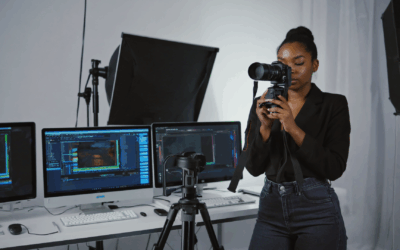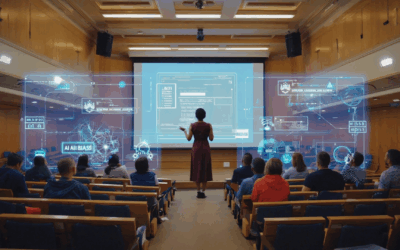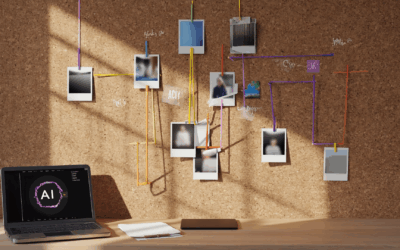Photography has evolved tremendously over the years, paving the way for innovative technologies and systems that have revolutionized the field. One such exciting development is the emergence of autonomous photography systems. As we explore the realm of these cutting-edge systems, we discover an entirely new dimension in the world of photography where enhanced accuracy, convenience, and creativity become the standard. In this detailed article, we will dive into the various aspects of autonomous photography systems and illustrate how they are shaping the present and the future.
Table of Contents
- Overview of Autonomous Photography Systems
- Emerging Technologies in Autonomous Photography
- Conceptualization of Autonomous Photography Projects
- Innovative Autonomous Photography Products
- Applications and Benefits of Autonomous Photography Systems
- The Future of Autonomous Photography
Overview of Autonomous Photography Systems
Autonomous photography systems are those that leverage artificial intelligence (AI), robotics, and other advanced technologies to enable cameras and other imaging devices to function independently, with minimal to no human intervention. These systems empower photographers and enthusiasts alike to capture stunning visuals with optimal precision, dynamic range, and creative flair.
Emerging Technologies in Autonomous Photography
Several technologies are at the forefront of the autonomous photography revolution. These innovations work in tandem to create powerful, self-sufficient systems that vastly improve the photography experience.
Artificial Intelligence (AI)
AI algorithms and machine learning techniques are increasingly being integrated into photography systems, automating various aspects of the process, such as subject detection, scene recognition, and optimal exposure settings. Advanced AI-powered systems can also learn and adapt to user preferences over time, delivering highly personalized photography experiences.
High-Performance Image Sensors
Modern autonomous photography systems employ cutting-edge image sensors that deliver ultra-high-resolution images and videos with outstanding color fidelity, detail, and dynamic range. These image sensors work in tandem with powerful processors to handle complex computational tasks at blazing-fast speeds.
Robotics and Motion Control
Robotic arms, motorized gimbals, and other motion control systems enable precise camera positioning and movement, fostering creative freedom and cinematic camera movement. From smooth, sweeping panoramas to complex, choreographed camera moves, these advanced motion control systems unlock new creative opportunities for photographers and videographers.
Conceptualization of Autonomous Photography Projects
Formulating the ideas and designs for autonomous photography projects demands a blended approach characterized by equal parts creativity and technical expertise. Successful project conceptualization involves several key components.
Storyboarding and Visualization
Crafting a visual representation of the desired outcome is vital for any autonomous photography project. Storyboarding enables photographers to plan their shots in detail, map out camera movements, and establish shot sequences. This facilitates smooth execution of the project and minimizes time-consuming trial and error.
Choosing the Right Equipment
Selecting the appropriate tools and equipment for each project is essential. From deciding between a DSLR or mirrorless camera to selecting the best lenses, lighting systems, and motion control rigs, the right gear can make or break the final product.
Setting Up the System
An accurate and user-friendly setup process is crucial for achieving the desired outcomes in autonomous photography projects. This involves properly configuring the AI, calibrating the equipment, and programming camera movements and settings. A well-orchestrated setup ensures seamless execution and optimal image quality.
Innovative Autonomous Photography Products
Many groundbreaking products have entered the market, bringing autonomous capabilities to the realm of photography. These cutting-edge offerings range from smart cameras to sophisticated software solutions that automate and enhance the photography experience.
- AI-powered cameras: These next-generation cameras are equipped with highly intelligent algorithms that identify subjects, assess scene conditions, and automatically apply optimal settings for each shot.
- Robotics and Motion Control Systems: Solutions like motorized gimbals, sliders, and robotic arms facilitate smooth, highly accurate camera movements for capturing powerful visuals and creative compositions.
- AI-Assisted Editing Software: Advanced image editing applications leverage AI technology to offer automated and personalized editing options, streamlining the post-processing workflow and delivering stunning results.
Applications and Benefits of Autonomous Photography Systems
The applications of autonomous photography systems extend well beyond traditional photography spaces, opening up new possibilities and benefits. These systems are proving invaluable in various sectors and industries.
- Aerial Photography: Drones equipped with high-resolution cameras, AI-powered tracking capabilities, and advanced motion control systems enable breathtaking aerial photography and videography with pinpoint precision.
- Virtual Reality and 360° Imaging: Autonomous systems empower photographers to capture seamless, immersive images and videos, creating highly engaging virtual reality and 360° content for a wide array of applications.
- Film and Television Production: Robotic camera systems and AI-assisted production tools allow for sophisticated, dynamic camera work, enhancing the visual storytelling in films and TV shows.
- Action Sports and Event Coverage: Autonomous photography systems excel in capturing fast-paced, high-energy events like sports competitions and concerts, ensuring no moment is missed.
The Future of Autonomous Photography
As advancements in AI, robotics, and imaging technology continue to accelerate, the future of autonomous photography systems is ripe with possibilities. Emerging trends like hyper-personalization, virtual reality, and creative intelligence promise to further enhance the photography landscape, pushing the boundaries of what is achievable and redefining the very essence of the art form.
In conclusion, autonomous photography systems offer an exciting new realm filled with opportunities to elevate the quality of our visual stories. By embracing these transformational technologies, we step into a thrilling future where images come to life with unparalleled clarity, dynamic range, and creative power.




0 Comments